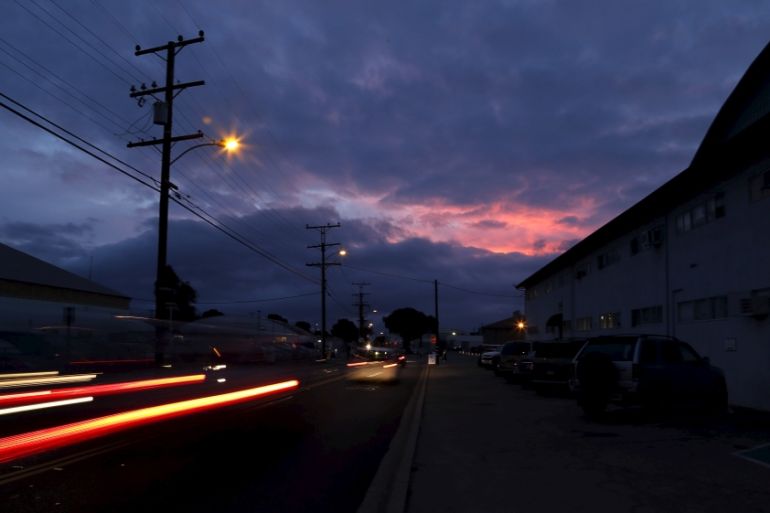Despite Trump, North America has most cities on climate A list
Calgary, Fayetteville and Santa Monica receive top CDP ratings for cutting emissions and increasing adaptation.

What do Alberta, Arkansas and California have in common?
Accent, weather or favourite sports teams? Well, perhaps they do not really share much – besides the fact that all three contain cities on CDP’s global climate A list.
Keep reading
list of 4 itemsAsia bears biggest climate-change brunt amid extreme weather: WMO
Photos: Highest-level rainstorm warning issued in south China’s Guangdong
Europe endured record number of ‘extreme heat stress’ days in 2023
Of the 105 urban areas that earned a score in the highest category, cities located in these states or provinces – specifically, the cities of Calgary, Fayetteville and Santa Monica – were mentioned for their leadership in North America on environmental resilience and emissions mitigation.
The United States topped the charts this year, accounting for 34 of CDP’s lauded cities – all taking bold action to address the climate crisis, ranging from a commitment to net-zero emissions by 2050 to the building of tree canopies to reduce the heat-island effect.
Despite US President Donald Trump’s administration distancing itself from the 2015 Paris climate agreement, many cities are committing to emissions reduction targets.
Cities with ambitious plans hope to avoid the worst impacts of flooding and extreme temperatures. There are twice as many that earned an A rating this year than last year.
CDP, a climate disclosure non-profit, gave ratings of A to D to 850 cities around the world – including 207 in North America.
Among the international cities identified for their excellent climate records for the first time were Yokohama, Japan; Seoul, South Korea; Sofia, Bulgaria; Riga, Latvia; Monteria, Colombia; Merida, Mexico; and Auckland, New Zealand.
The US cities Ann Arbor, Flagstaff and West Palm Beach also received top billing.
To receive an A, a city must have an emissions inventory and CO2 reduction target, as well as plans for drastic action and quick adaptation.
“These cities went through annual disclosures and hit the rigorous goals that we have,” said Katie Walsh, head of cities, states and regions at CDP North America.
She told Al Jazeera that they “recognise climate change is happening now, not tomorrow” and noted, “action is needed at unprecedented scale, and cities have a significant role to play in reducing their own footprints”.
Walsh added that cities account for 70 percent of global emissions and that wildfires in California, flooding of the Mississippi River and hurricane storm surges along the Gulf Coast are disproportionately hitting North American cities.
She also said that “US cities are stepping up to fill the void of federal inaction on climate change, to sustain future economic growth and remain safe”.
“You don’t have to be in a blue state to have a green city,” Walsh said.
Fayetteville is located in a US state that has not always been quick to enact progressive climate policies. There were also no other cities in the South that earned an A from CDP.
The municipal government in Fayetteville has built a solar array project that now provides renewable energy to two of the city’s wastewater treatment plants, saving taxpayers $6m over the next 20 years.
“Climate change is one of the greatest threats facing humanity right now, and cities are increasingly determined to fight the growing crisis and adapt to risks posed by it,” said Melissa Wright, senior associate in the environment programme at Bloomberg Philanthropies.
“Each city on CDP’s Cities A List is taking meaningful actions,” she added.
Last month, CDP released its corporate climate A list, with Microsoft, Citi and Walmart among the top performers.